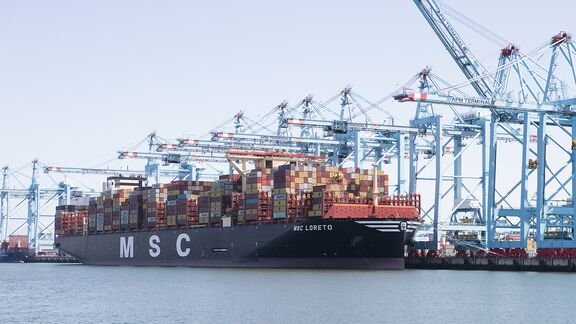Port of Rotterdam Expands Cold Chain Capacity to Meet Rising Global Food Demand

Rotterdam, Netherlands – June 3, 2025
By Maria Kalamatas | The Logistic News
Section: Maritime
In response to soaring demand for temperature-controlled logistics, the Port of Rotterdam has unveiled a significant expansion of its cold chain infrastructure, targeting greater resilience in global food and pharmaceutical supply chains.
The €110 million project, completed over the weekend, adds more than 200,000 cubic meters of new refrigerated storage near the Maasvlakte terminals. It marks one of the largest cold logistics investments in Northern Europe to date.
“We’re not just expanding storage — we’re safeguarding global food security,” said Lars Van Dijk, COO of Rotterdam Cold Services, one of the main operators behind the initiative.
Strategic Timing
The move comes as importers across Europe grapple with disrupted agricultural flows, changing weather patterns, and geopolitical tensions impacting grain, dairy, and vaccine shipments.
Recent droughts in Southern Europe and export restrictions in South America have intensified pressure on Europe’s ports to handle sensitive cargo with greater precision and speed.
“With Rotterdam’s enhanced cold capabilities, we now have a crucial buffer against volatility,” noted Stefania Conte, Head of Supply at FreshBridge Logistics, a leading European produce importer.
Tech-Driven Sustainability
The facility boasts automated pallet handling, AI-powered climate control, and renewable-powered cooling systems — all designed to reduce energy use while ensuring optimal preservation conditions.
“Efficiency and emissions reduction go hand in hand,” said Dr. Willem-Jan Mulder, advisor to the Dutch Ministry of Infrastructure. “This upgrade is a model for sustainable logistics development.”
As sustainability regulations tighten across Europe, logistics providers are under pressure to decarbonize operations without sacrificing service quality. Rotterdam’s new installation aims to do both.
Global Supply Chain Implications
With its enhanced cold chain offering, the Port of Rotterdam positions itself as a critical hub for perishable and sensitive cargoes arriving from Africa, Asia, and Latin America. Maritime routes via the Strait of Gibraltar and the Suez Canal are now seeing increased volumes of reefers heading toward Northern Europe.
“We’re seeing a clear shift in routing preferences,” said Magdalena Russo, maritime analyst at ColdTrack Research. “Shippers want fewer transit nodes and more reliable end-points. Rotterdam now checks both boxes.”
Looking Ahead
Port officials expect throughput of temperature-sensitive cargo to rise by at least 15% over the next 12 months. Talks are already underway to replicate this model in other segments, including pharmaceutical APIs and biologics.
“Resilience isn’t a buzzword anymore,” said Van Dijk. “It’s what separates winners from losers in global trade.”
As climate, conflict, and consumption reshape how goods move, Rotterdam’s bet on the cold chain looks less like a niche upgrade — and more like a blueprint for the ports of tomorrow.
✎ Maria Kalamatas
Senior Correspondent – The Logistic News
Section: Maritime
The post Port of Rotterdam Expands Cold Chain Capacity to Meet Rising Global Food Demand appeared first on The Logistic News.
Share this post
Related
Posts
“We’ve Reached Our Limit”: DHL Canada Freezes Imports Amid Widening Labor Standoff
TORONTO | June 17, 2025By Maria KalamatasCategory: Land Transport → Labor & Operations LeadAfter two weeks of tense silence and stalled...
Embraer’s Feeder Freighter Plan Signals a New Era for Regional Air Cargo
SÃO JOSÉ DOS CAMPOS | June 17, 2025By Maria KalamatasCategory: Aviation → Air Cargo It wasn’t a loud announcement—no massive rollout...
Heavy Cargo Gains Visibility as Transport Logistic Southeast Asia Unveils Dedicated Zone for Oversized Freight
SINGAPORE | June 17, 2025By Maria KalamatasCategory: Cargo → Project Freight At most logistics trade shows, oversized freight is barely more...
In Rotterdam, Shipping Waste Finds New Life as Circular Economy Gains Steam
ROTTERDAM | June 17, 2025By Maria KalamatasCategory: EchoChain → Sustainability & Circular Logistics Early Monday morning, as container cranes swayed gently...
